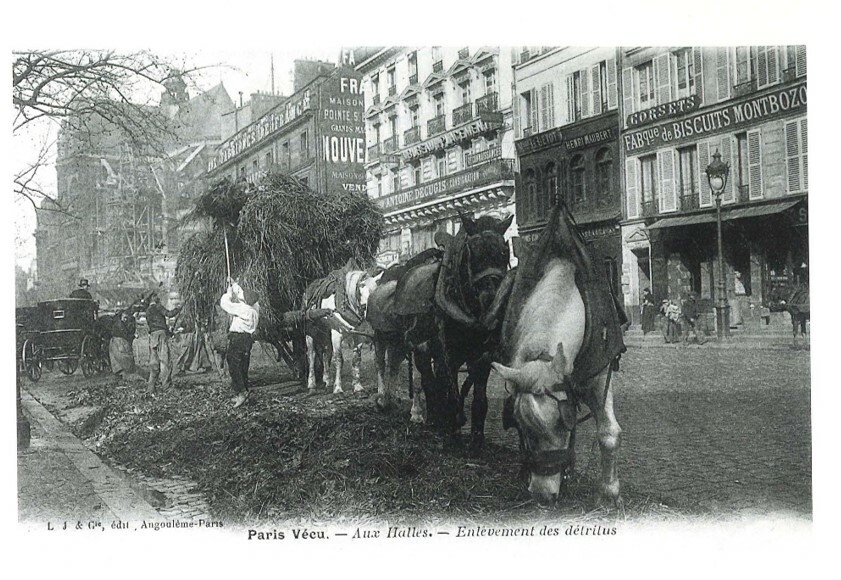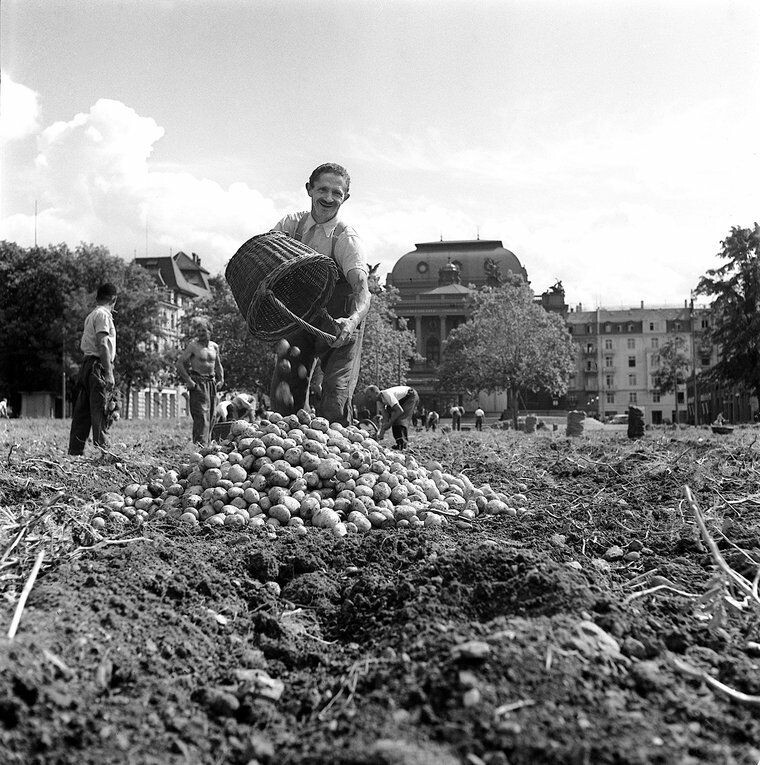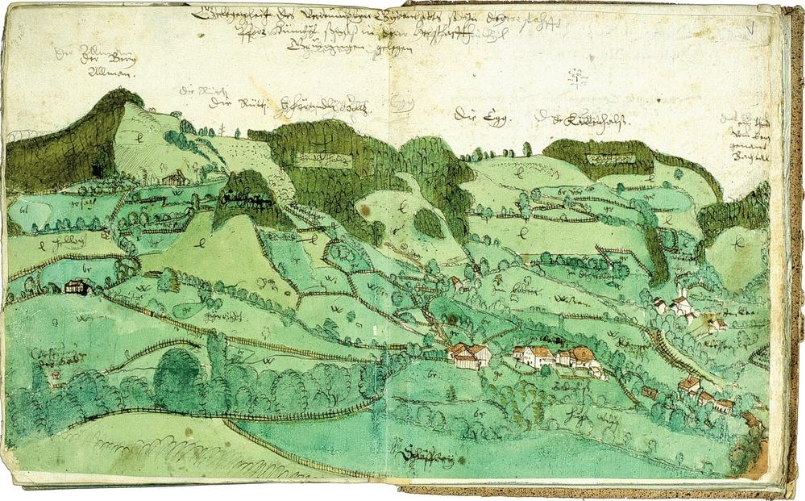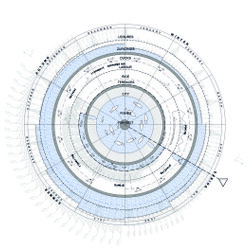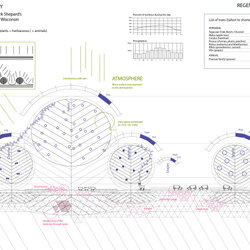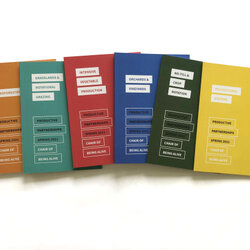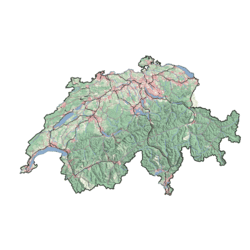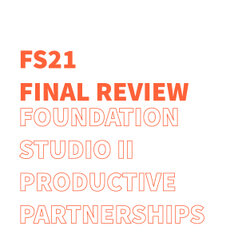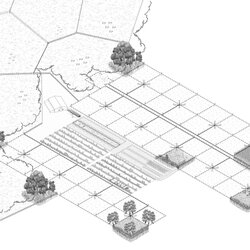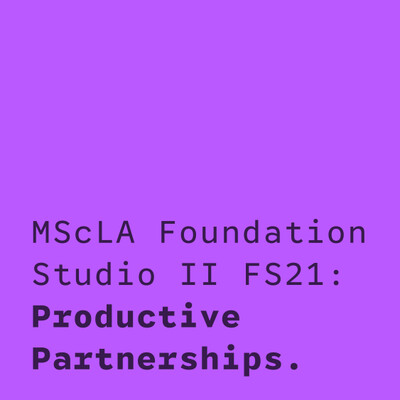
MScLA Foundation Studio II FS21: Productive Partnerships.
How can the addition of integrated, dynamic, and productive systems transform and define the urban fabric?
“Urban agriculture is appealing for making the relationship between food production and city visible and thus renewing the historic tie between culture and cultivation. In this context, city and agriculture are not opposites but two sides of the same coin. Cities were not just supported but defined by agriculture.” Dorothee Imbert, 2015
In Paris, the marshy wetland in the floodplain on the North bank of River Seine, known as the marais, was the site of market vegetable production beginning as early as the 12th century. While the site of the gardens shifted as Paris grew, the practice of intensively cultivating the edges of the city to produce food for the urban population continued. Each week, the, Jardin Maraichers would haul horse manure from the center of Paris as fertilizer for the market gardens. Later, they used the city’s sewage outflow (Leduc, 2015). For hundreds of years, Paris was metabolically linked to its periphery, cycling nutrients through systems of food production on an urban scale. The long-term intensive cultivation of urban food influenced the development of a cuisine that emphasized fresh fruits, vegetables, and locally grown herbs (Quellier, 2015).
In the contemporary manifestation of agriculture, the production of food occurs far away from the urban centers—where there is ample space for large machines to cultivate much larger swaths of land. The division between urban and rural seems to be in part constituted by the presence or absence of agricultural production. However, this dichotomy is not inherent to the urban condition. Practices of cultivation, and the patterns that they imprinted on the landscape, still shape cities like Paris, the West Bank, Baghdad, and Mexico City (Imbert, 2015). In fact, prior to the industrialization of agriculture and a global food supply chain enabled by fossil fuels, the question of how to feed a dense and growing population was critical. We recognize that infrastructures of transportation, water, and waste are integral to a city’s operations, as well as its form. Can this also be true for its systems of food production?
We are not just calling for the integration of food systems into the form of the city, but for a transformation of those systems. The rapid industrialization and expansion of commercial agriculture in the 20th century has witnessed erosion and depletion of soils on a massive scale, a loss of biodiversity and severe economic inequality. The logics of capital that emphasize standardization, efficiency, and profit have co-opted and transformed land-based logics that demand time, care, a close-reading of and integration into larger systems, and place-specific management regimes.
As the far-reaching side-effects of the ‘Green Revolution’ in global agricultural production have been felt, there has been a growing call to respond by shifting practices in agriculture. Strategies like rotational grazing and agroforestry focus on integrating animals to enhance the integrity of a living soil capable of supporting a diversity of food crops, as well as storing excess carbon from the atmosphere. Organic and biodynamic methods in agriculture seek to reduce or eliminate reliance on chemical fertilizers in favor of a cyclical reintroduction of waste as fertilizer. Strategies of water harvesting have been developed to reduce soil erosion and slow the process of large-scale desertification. While often these strategies are touted as new developments, most are a reiteration of historic and indigenous forms of agriculture that persisted for millennia prior to the colonial expansion.
In the face of a global climate and food crisis, can we allow these strategies to transform the urban condition?
In the 1940’s Switzerland began the Plan Wahlen, also known as the Anbauschlacht, to enhance domestic food security. At the time, Switzerland was importing more than 40% of its food supply and policymakers, recognizing the threat of WWII, pushed for an increase in domestic production of crops. This resulted in a large range of non-agricultural landscapes being appropriated for agricultural use. The territorial reorganization that occurred impacted urban as well as rural areas. In the city of Zurich, ‘non-vital’ economic activities were paused (HLS 2021), and potatoes were grown in the Operaplatz. This moment demonstrates a political and social will to up-end the status quo of urban operations in an effort to respond to a crisis.
While the image of the Operaplatz filled with potatoes during the Anbauschlacht provokes thoughts of new hybrid productive urban landscape, the Wahlen Plan ultimately laid the foundation for a massive-scale modernization of Swiss agriculture—threatening traditional practices of alpine grazing and small-scale production. With this in mind, we are cautious about invoking a crisis-centered justification for integrating food into the city, even though we are in the midst of a slow-moving but still violent global climate crisis. Instead of a manufactured sense of urgency that only reinforces existing power dynamics (Klein, 2014), we propose to shift from a productivity-focused frame to emphasizing the larger ethics of landscape relationships. In Matters of Care, Maria Puig de la Bellacasa encourages us to imagine “Soil Time”—how considering long-term processes of soil building forces us to work outside of a mindset that prioritizes productivity and urgency. Focusing on the living system of soil, the rhizosphere, can shift our attention from the product to the rela-tions of production.
Decentering productivity does not mean removing it from the picture completely. Perhaps the question is not how to make the urban landscape more ‘productive’ for us, but how to share this productivity with other living creatures. Our current agricultural model isolates certain parameters, such as yield of valuable crops, from the network of relationships that sustain this productivity. This myopic method for managing landscapes ignores all of the living and dying that happens in, around and through what we narrowly define as “productive.” Essential to creating systems that fit into this web of partnerships is the design of temporal and spatial management regimes that respond to specific ecological dynamics of a place. With attention to landscape systems of climate, geology, and life cycles, humans can be a part of this productive exchange among living creatures. In this studio, we want you to propose the spatial, material, and temporal conditions that enable these productive partnerships.
We will begin with a study of the large-scale agricultural needs and opportunities of Zurich. After getting the lay of the land, each student will research and draw a reference system for agricultural production, focusing on techniques that have been developed to enhance long term soil integrity or to respond to particular constraints. Studying these techniques will give you tools to design an intelligent system of production in the context of Zurich. You will then choose an urban typology (such as streets, margins, water edges) and de-sign a system that utilizes a series of spaces in that typology. Your projects will emphasize management practices and changes over time, as well as responding to the specific spatial opportunities of your chosen urban condition. Each project should be supported by the larger systems of water, climate, vegetation, topography, and soil that you have been mapping in your Urban Systems seminar. Col-lectively, the proposals will demonstrate a creative, rigorous, and detailed vision for the integration of productive systems into the landscape of Zurich, thereby transforming the city, both spatially and culturally.
References:
Imbert, D. (2015). Food and the City: Histories of Culture and Cultivation; [Based on Papers Presented at the Symposium "Food and the City," held at the Dumbarton Oaks Research Library and Collection, Washington DC. on May 4-5, 2012]. Washington, DC: Dumbarton Oaks Research Library and Collection.
Quellier, F. Paris Is a Land of Plenty: Kitchen Gardens as Urban Phenomen in a Modern-Era European City (sixteenth Through Eighteenth Centuries). In Imbert, D. (2015). Food and the City: Histories of Culture and Cultivation. Washington, DC: Dumbarton Oaks Research Library and Collection.
Taylor-Leduc, S. Market Gardens in Paris: 'a Circulus Intelligent' Circa 1790-1900. In Imbert, D. (2015). Food and the City: Histories of Culture and Cultivation. Washington, DC: Dumbarton Oaks Research Library and Collection.
Klein, N. (2015). This Changes Everything: Capitalism Vs. The Climate. Simon & Schuster.
Puig de la Bellacasa, M. (2017). Matters of Care: Speculative Ethics in More Than Human Worlds. University of Minnesota Press.
